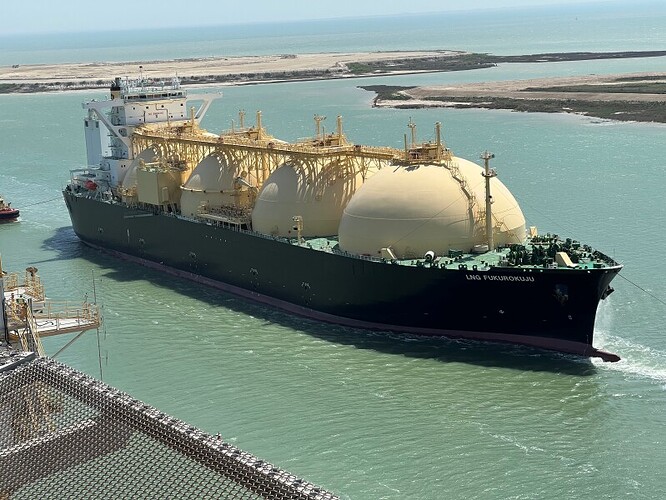The Texas coast LNG terminal had been idled since a fire damaged a portion of the facility in June.
The 2.38-Bcf Freeport LNG terminal in Quintana, Texas, hopes to resume full capacity this spring. Source: Freeport LNGIn the 7 years since the US exported its first cargo of liquefied natural gas (LNG) from Cheniere Energy’s Sabine Pass LNG terminal in Cameron Parish, Louisiana, the nation’s LNG industry has grown to become one of the world’s largest.
In 2022, US exports of LNG—at 76.4 million tonnes—were the third highest globally, behind Australia and Qatar, according to Wood Mackenzie.
Cheniere Energy, the largest exporter of US LNG, produced about 44 million tonnes in 2022, 72% of which was directed to Europe, Jack Fusco, Cheniere’s president and chief executive officer, said in the company’s annual earnings call on 23 Feburary.
With operations at the Freeport LNG—the second largest US LNG export facility—set to resume in March, WoodMac expects the US to easily exceed that figure and become the world’s largest exporter of LNG in 2023.
Record prices and need for energy security are driving huge momentum for US LNG projects that could see more than $100 billion in investment before the end of the decade, according to a report published 22 February by the global energy consultancy.
At least 16 new LNG projects are planned on the US Gulf Coast, with these projects either under construction or in the pre-final investment decision (FID) stage potentially adding between 70 million and 190 million tonnes/year of LNG capacity by 2030, WoodMac said.
FIDs have been taken on four new projects, including Golden Pass LNG, Plaquemines LNG Phase 1, Corpus Christi Stage 3, and New Fortress Energy’s Louisiana Fast LNG. The projects collectively will add almost 45 million tonnes/year of new US capacity. WoodMac classified the Plaquemines LNG Phase 2 and Port Arthur LNG projects as probable developments that would, when operational, add more than 19 million tonnes/year in capacity.
WoodMac sees another wave of new FIDs on the horizon, which would increase capacity even further.
“Last year saw European and Asian LNG prices hit record highs, while a challenging geopolitical environment underlined the need to invest in energy security. As a result, buyers, including portfolio players, and US producers and infrastructure companies lined up behind long-term deals with US LNG projects,” WoodMac said in the report. “A whopping 65 million tonnes/year of long-term contracts were signed in 2022 alone, dwarfing the 18.5 million tonnes/year of new contracts confirmed in the previous year.”
This record contracting has helped push forward a raft of new pre-FID LNG projects, many of which are either close to or have reached contracted offtake threshold for raising debt.
“Our analysis indicates that, if current momentum continues, between 70 million and 190 million tonnes/year could be added to US LNG capacity before the end of the decade,” WoodMac said. “That would more than double current exports. If approved, we calculate these FIDs could lead to an investment of over $100 billion in US LNG production over the next 5 years.”
In a nod to the ever-expanding LNG market, the WoodMac report was published the day before Cheniere Energy announced it is preparing to expand its Sabine Pass liquefaction facility, which would add 20 mtpa of LNG production to the facility’s current production capacity of about 30 mtpa.
